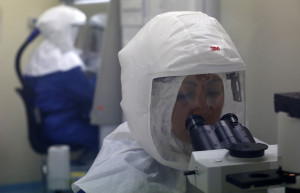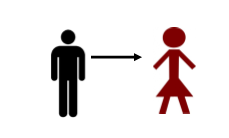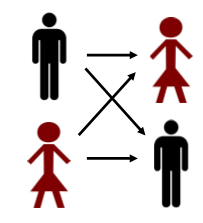Let’s imagine there is a dangerous socially transmitted disease, called V-bola. The transmission of V-bola from men to women is a serious problem in society that effects anywhere between 10-30% of the female population.
There are two different groups of researchers that both want to stop the transmission of V-bola from men to women. The F-Researchers focus only on how men transfer V-bola to women. All of their data, studies, and theories of cause and effect are based on this male to female transmission.
The second group of researchers, the T-Researchers, are studying not only male to female transmission, but also female to male, male to male, and female to female transmissions. The T-Researchers believe that by gathering all the relevant information on how V-bola is transmitted from person to person, they will be able to find the similarities and patterns that will ultimately lead to the root causes of V-bola transmission.
The T-Researchers are looking for the common denominators and factors among all the people who are transmitters of V-bola and all the people who are receivers of V-bola. The T-Researchers are gender-neutral and are focusing on V-bola as a human problem.
The F-Researchers, on the other hand, are gender-centric. They believe that male to female transmission is the real problem. All of the theories that they have developed are unable to explain male to male, female to male, and female to female transmissions. Therefore, they actively deny the importance and magnitude of anything but male to female transmission. In order to establish the priority of male to female transmission, the F-Researchers cherry pick data and studies that inflate male to female transmission rates while simultaneously burying data and studies that show significant transmissions that are not male to female.
In this hypothetical example, both groups of researchers want to help women by reducing male to female transmission of V-bola. The T-Researchers hope to find the cause of male to female V-bola transmission by acquiring the most widespread and accurate data on all types of transmissions. The F-Researchers are only interested in using the narrower set of data that pertains to only male to female V-bola transmission.
Which group of researchers do you think are most likely to truly help women by actually finding the real causes of V-bola transmission?



Proof that you can say a lot by saying little.